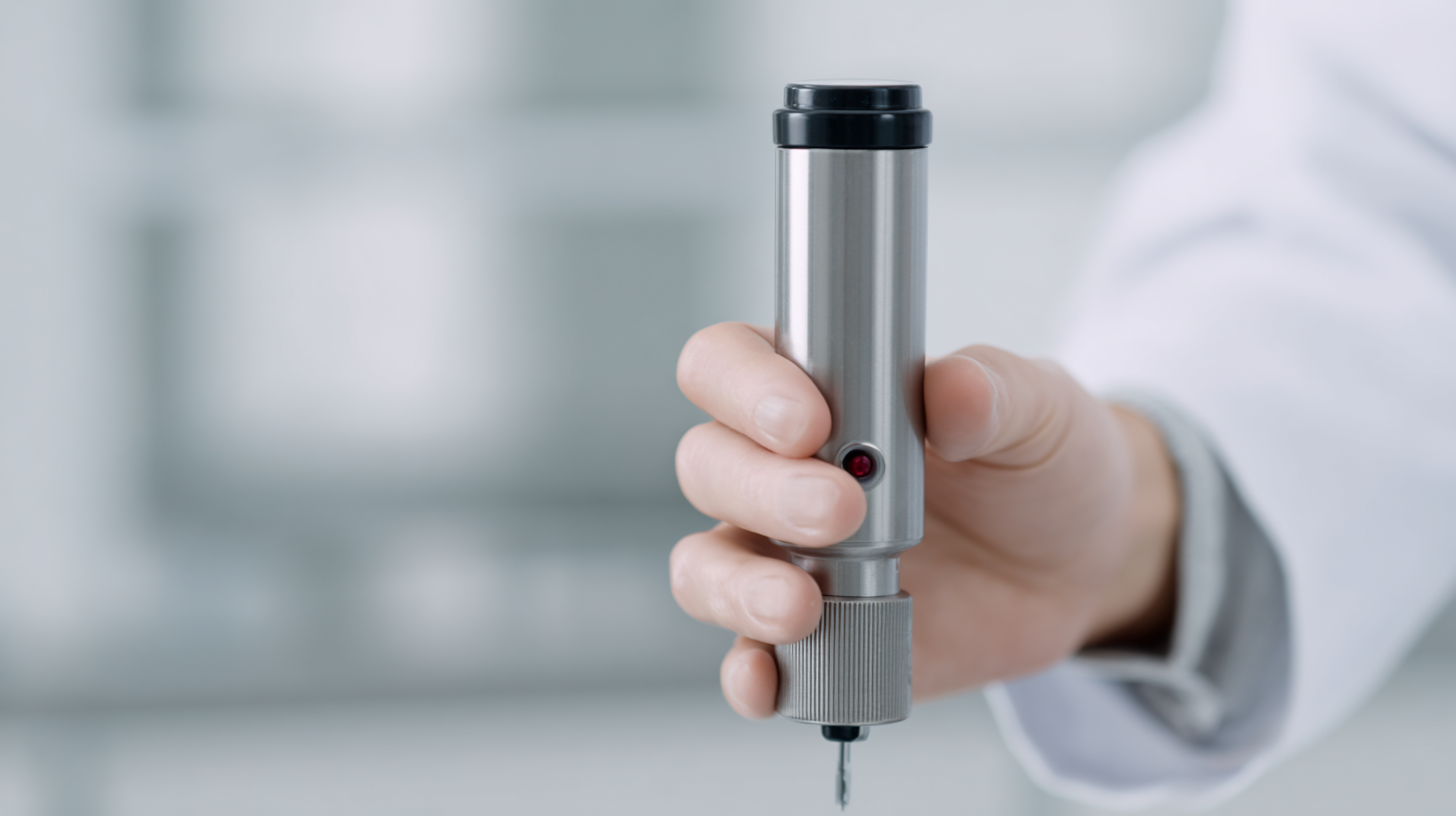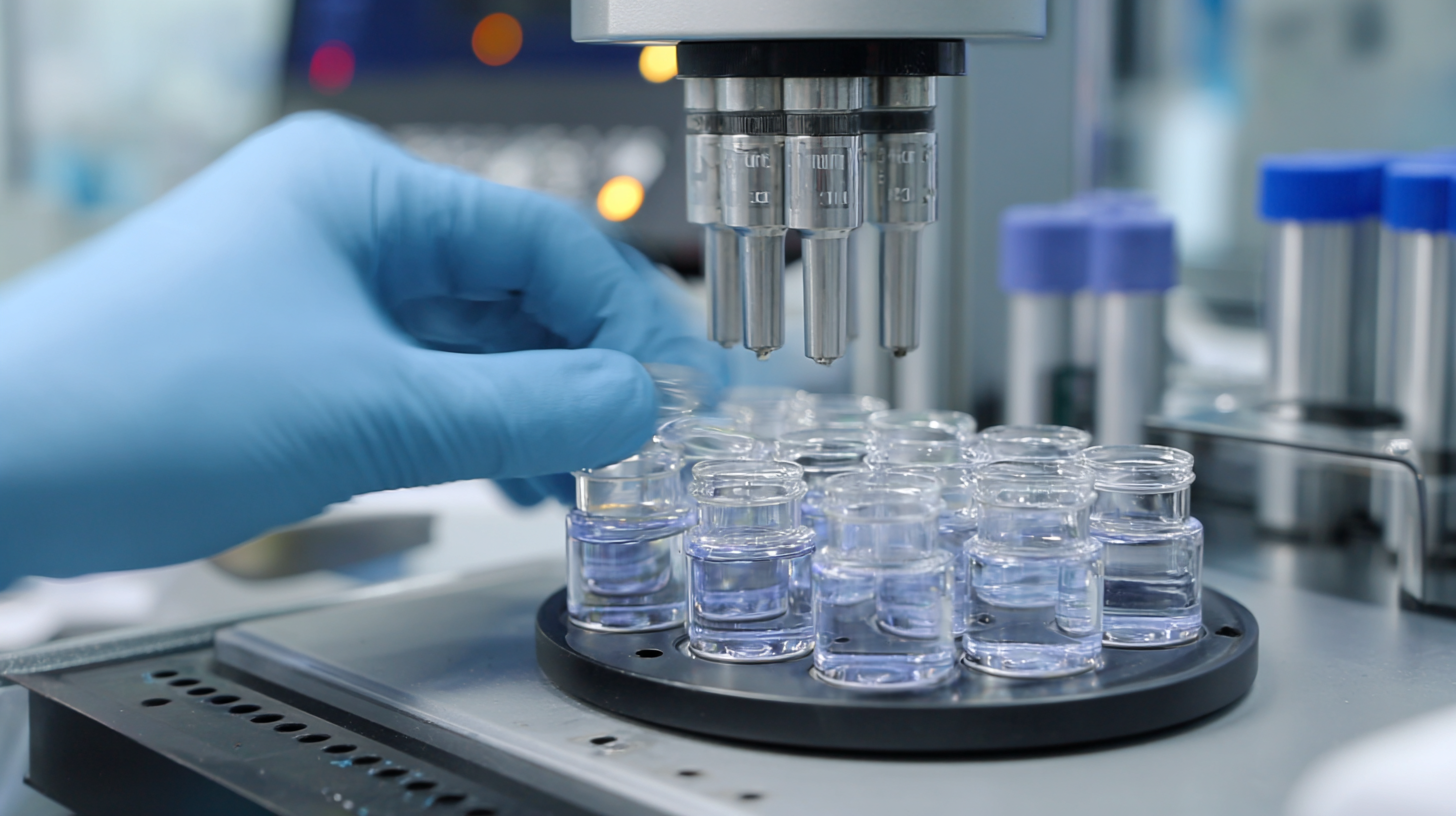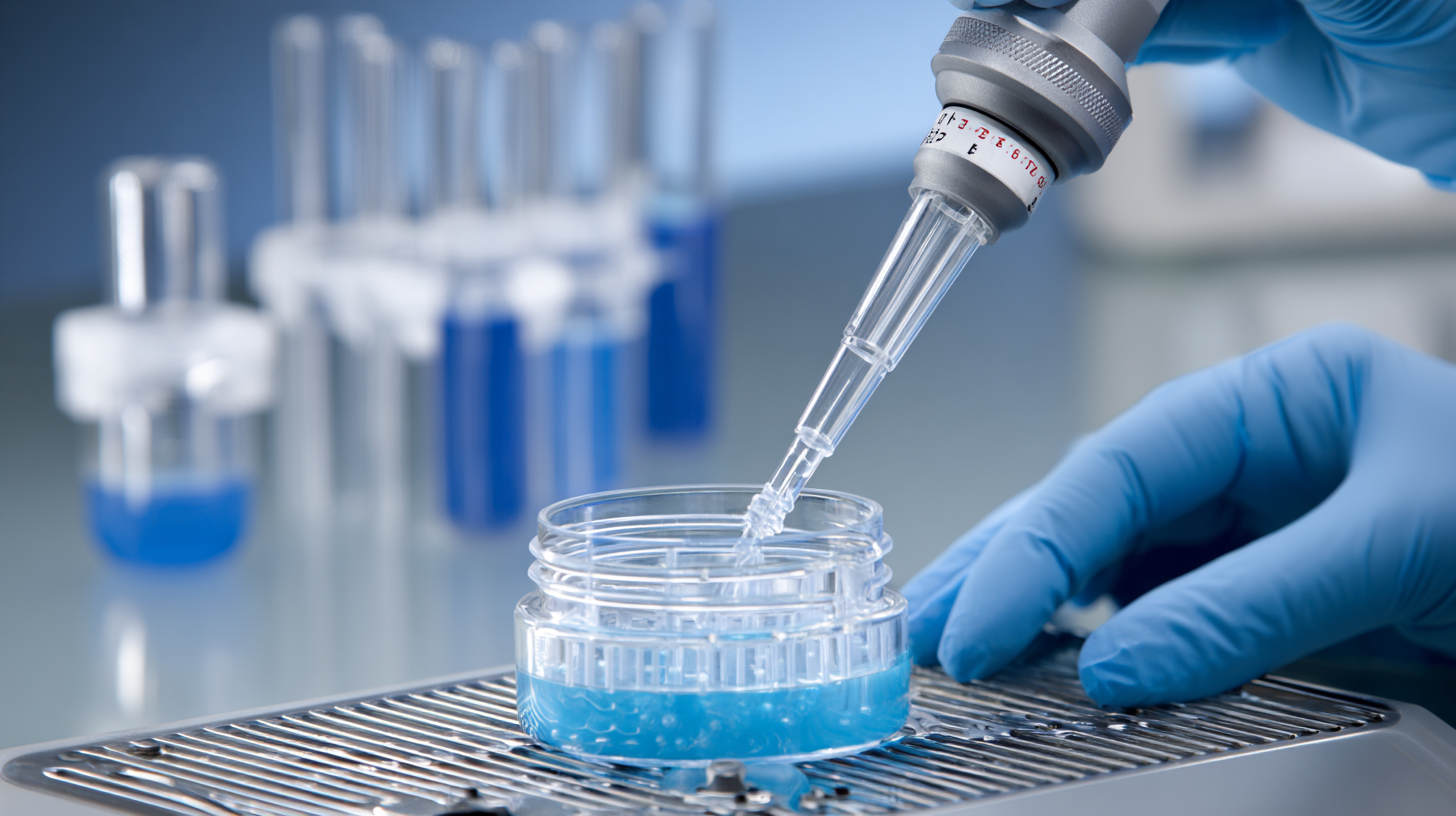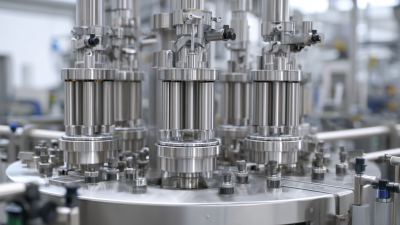In today’s fast-moving lab world, there’s no denying that precision and consistency are key. That’s where a Manual Homogenizer really becomes a game-changer for researchers and scientists trying to get reliable sample prep and emulsification. At CAS PETER (HANGZHOU) NANOTECHNOLOGY CO., LTD, we’re all about high-pressure homogenizers and microfluidizers—basically cutting-edge nanotech solutions custom-made for different industries. We know just how important a Manual Homogenizer is when it comes to getting evenly dispersed particles and making lab work more efficient. So, we’ve put together eight solid reasons why investing in this piece of equipment is honestly a no-brainer if you want better research results and to stay on industry standards. Whether you're into pharma, food processing, or materials science, adding a Manual Homogenizer to your setup can seriously boost your lab’s performance and output.

You know, in labs, reducing particle size is kinda a big deal — you can’t really overstate its importance. Recent research shows just how crucial it is, whether we’re talking about how tiny organic aerosol particles influence cloud formation or how small respiratory droplets, like those carrying COVID-19, spread. Being able to control particle size actually opens up a whole world of possibilities. Scientists use this to study stuff like microplastics in water, figuring out how big or small they are helps with managing environmental issues better.
And it’s not just about environmental science. In particle physics and materials science, getting the size just right is essential. For example, the way coal burns — whether it ignites easily or not — really depends on how big its particles are. That impacts energy production and safety too. Luckily, using a good manual homogenizer allows labs to produce consistent, reliable particle sizes. That means more accurate data, no matter what field you’re into — whether it’s studying ecosystems or working with new materials. Overall, controlling particle size isn’t just a technical detail; it’s a key part of understanding and solving some pretty complex problems.
When you're working in a lab, making sure your samples are consistent and of high quality is super important. Manual homogenizers are a real lifesaver here—they help ensure everything's evenly mixed, especially in sensitive areas like biopharmaceuticals. Unlike those fancy automated machines, manual homogenizers give you more control and precision during the process. That’s a big deal because it helps cut down on the mistakes that can happen from manual handling. Having that level of control really matters when you're preparing samples for analysis since it reduces the chances of variability messing up your cell counts or concentrations.
Plus, recent studies have shown just how valuable manual homogenizers can be for things like extracting metagenomic DNA. It turns out that manual methods can actually boost the sensitivity and accuracy of things like 16S rRNA gene amplification, which is crucial if you're trying to get a clear picture of microbiome compositions. Using a manual homogenizer helps researchers produce higher-quality samples, leading to more reliable and reproducible results. In settings where every little detail counts, the best manual homogenizers don’t just make things easier—they really raise the bar for the overall quality of lab work.
This bar chart illustrates the sample consistency percentages achieved through manual homogenization across various samples. The data indicates that manual homogenization significantly enhances the quality and reproducibility of laboratory samples.
When it comes to homogenization in the lab, scientists often find themselves caught between using manual versus mechanical methods. Sure, mechanical homogenizers are fast and give consistent results, but there's still something pretty appealing about manual ones—especially for those tricky, specialized jobs. With manual homogenizers, you get that hands-on control and precision that can really make a difference, especially when you're dealing with delicate samples or small batches. It’s kind of satisfying to be able to tweak the force and timing just right, tailoring the process to fit what your samples need.
Plus, manual homogenizers usually cost less to operate and are simpler to maintain compared to their mechanical counterparts. No need for electricity or complicated machinery—just a quick setup and you’re good to go. This makes them super handy when you're in a pinch or working with limited resources. They’re also more portable, so you can take them wherever you need—whether inside or outside the lab. Knowing when to pick manual over mechanical homogenization is all about understanding the trade-offs, helping you make smarter choices to protect your samples while hitting your experimental goals.
| Feature | Manual Homogenizer | Mechanical Homogenizer |
|---|---|---|
| Cost | Low | High |
| Ease of Use | Simple | Requires Training |
| Versatility | High | Medium |
| Sample Volume | Small to Medium | Large |
| Homogenization Time | Moderate | Fast |
| Noise Level | Quiet | Loud |
| Maintenance | Low | High |
| Efficiency | Good | Excellent |
When you're aiming for accurate results in the lab, you can't really overlook the importance of manual homogenizers. These tools are key to getting a consistent sample, which is super important for precise measurements. By breaking down particles and making sure everything's evenly distributed, manual homogenizers help reduce variability—that sneaky thing that can mess up your experimental results. And honestly, this kind of reliability matters a lot—especially in fields like biochemistry and pharmaceutical research where accuracy isn’t just a bonus, it’s everything.
Getting the most out of your manual homogenizer can really boost your lab results. A good tip? Pick the right one for your specific sample. Different materials need different approaches if you want perfect homogenization. Also, keeping a steady hand while blending can make a big difference in achieving uniformity. Don’t forget to keep your equipment clean—contamination is a party pooper that can ruin your results.
Oh, and always make sure to calibrate your homogenizer before diving into those critical experiments. It might sound like a hassle, but it helps keep things accurate and even makes your equipment last longer. Plus, running regular training sessions for your team on the proper way to use and handle these machines can really make a difference. It just helps keep your results consistent and trustworthy, no matter who’s doing the testing.

In research labs these days, cutting costs is a big deal when choosing equipment. Manual homogenizers often come across as a budget-friendly option compared to their automatic counterparts—they save you quite a bit without sacrificing performance. I read a report from Research and Markets that predicts the lab homogenizer market will grow by around 6% each year, which just shows there’s plenty of demand for efficient yet affordable gear. Plus, manual versions usually cost less upfront and are cheaper to maintain, making them a smart pick especially for labs operating on tight budgets.
If you're trying to get the most bang for your buck with a manual homogenizer, it’s worth thinking about the size and type of samples you typically work with. If you're only running small batches or using it occasionally, going for a solid manual model is probably enough—no need to splurge on fancy automation that you won’t really need. Also, training your team on how to use it properly really matters; when everyone knows what they’re doing, results tend to be more consistent, and that can save you some serious time and hassle.
When shopping around, don’t forget to check out the performance stats and read some user reviews—they can give you a real sense of how well a particular model works. And just a heads-up: keeping your homogenizer clean and maintained isn’t just good practice, it can actually extend its lifespan and help you avoid costly repairs down the line. Overall, investing in a manual homogenizer is a pretty smart move—it helps you stay within budget while still giving your lab the flexibility to tackle different research projects.
When it comes to lab equipment, the manual homogenizer really stands out – not just for how well it works, but also because it focuses so much on user safety and comfort. I read a report from the American Society for Testing and Materials (ASTM) that said nearly 30% of lab injuries are linked to using equipment incorrectly. That's pretty eye-opening! What’s great about these manual homogenizers is that their ergonomic design goes a long way in reducing strain and avoiding injuries. Features like adjustable grips and being lightweight make it much easier for scientists and researchers to use them comfortably—so you’re less likely to get those repetitive strain injuries that can happen in a busy lab.
And honestly, safety really matters here. A study published in the Journal of Laboratory Safety pointed out that manual tools tend to have fewer accidents compared to automated versions. That's mainly because users have direct control over what's happening, which helps avoid unexpected malfunctions or dangerous mishaps that can sometimes happen with automated systems—especially when there’s no one directly overseeing them. So, going with a manual homogenizer isn’t just about safety; it also creates a more user-friendly environment. That kind of setup is key for getting more done, with fewer risks lurking around.

: Particle size reduction is crucial because it influences various scientific phenomena, such as cloud formation by organic aerosol particles and the transmission dynamics of respiratory droplets, as well as the behavior of microplastics in ecosystems.
Particle size can significantly alter the spontaneous combustion characteristics of coal, which impacts both energy production processes and environmental safety.
Manual homogenizers ensure sample homogeneity by providing precision and control during the homogenization process, which is essential for maintaining the integrity of cell counts and concentrations in sensitive analyses.
Recent advancements show that manual homogenizers enhance the sensitivity and rigor of 16S rRNA gene amplification, improving the accuracy of microbiome taxonomic profiling.
Manual homogenizers incorporate adjustable grips and lightweight construction, which help reduce the risk of strain and injury, promoting comfort during use.
Manual homogenizers tend to have lower accident rates because they allow users to maintain direct control over the process, reducing the likelihood of unexpected malfunctions associated with automated systems.
A high-quality manual homogenizer provides consistent and reproducible particle sizes, improving data accuracy and enhancing scientific understanding across various disciplines.
Controlling particle size distribution is essential for reliable experimental outcomes, as it improves the accuracy of data and the understanding of diverse phenomena.
By streamlining processes and enhancing sample quality, manual homogenizers help ensure that research findings are robust and reproducible in rigorous laboratory settings.
User control in laboratory equipment, as provided by manual homogenizers, minimizes risks and improves operational safety, fostering a user-friendly environment that enhances productivity.







